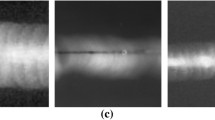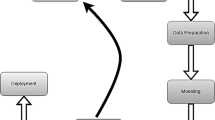Abstract
Weld defect detection is an important task in the welding process. Although there are many excellent weld defect detection models, there is still much room for improvement in stability and accuracy. In this study, a lightweight deep learning model called WeldNet is proposed to improve the existing weld defect recognition network for its poor generalization performance, overfitting, and large memory occupation, using a design with a small number of parameters but with better performance. We also proposed an ensemble-distillation strategy in the training process, which effectively improved the accuracy rate and proposed an improved model ensemble scheme. The experimental results show that the final designed WeldNet model performs well in detecting weld defects and achieves state-of-the-art performance. Its number of parameters is only 26.8% of that of ResNet18, but the accuracy is 8.9% higher, while achieving a 24.2 ms inference time on CPU to meet the demand of real-time operation. The study is of guiding significance for solving practical problems in weld defect detection, and provides new ideas for the application of deep learning in industry. The code used in this article is available at https://github.com/Wanglaoban3/WeldNet.git.











Similar content being viewed by others
Data availability
Data will be made available on request.
Abbreviations
- TIG:
-
Tungsten inert gas
- CNN:
-
Convolutional neural network
- SVM:
-
Support vector machine
- CPU:
-
Central processing unit
- GPU:
-
Graph processing unit
- FCN:
-
Fully connected network
- HDR:
-
High dynamic range
References
Allen-Zhu Z, Li Y (2020) Towards understanding ensemble, knowledge distillation and self-distillation in deep learning. arXiv:2012.09816 (2020)
Bacioiu D, Melton G, Papaelias M, Shaw R (2019) Automated defect classification of aluminium 5083 TIG welding using HDR camera and neural networks. J Manufac Process 45:603–613. https://doi.org/10.1016/j.jmapro.2019.07.020
Bacioiu D, Melton G, Papaelias M, Shaw R (2019) Automated defect classification of SS304 TIG welding process using visible spectrum camera and machine learning. NDT & E International 107. https://doi.org/10.1016/j.ndteint.2019.102139
Chen Z, Gao X (2014) Detection of weld pool width using infrared imaging during high-power fiber laser welding of type 304 austenitic stainless steel. Int J Adv Manufac Technol 74(9–12):1247–1254. https://doi.org/10.1007/s00170-014-6081-3
Chiaranai S, Pitakaso R, Sethanan K, Kosacka-Olejnik M, Srichok T, Chokanat P (2023) Ensemble deep learning ultimate tensile strength classification model for weld seam of asymmetric friction stir welding. Processes 11(2):434
Du D, Hou R, Shao J, Wang L, Chang B (2008) Real-time Xray image processing based on information fusion for weld defects detection. In: 17th world conference on nondestructive testing, Shanghai, China
Ericsson M (2003) Influence of welding speed on the fatigue of friction stir welds, and comparison with MIG and TIG. Int J Fatigue 25(12):1379–1387. https://doi.org/10.1016/s0142-1123(03)00059-8
Gao P, Wang C, Li Y, Cong Z (2015) Electromagnetic and eddy current NDT in weld inspection: a review. Insight-Non-Destructive Testing and Condition Monitoring 57(6):337–345
Gao X, Zhang Y (2015) Monitoring of welding status by molten pool morphology during high-power disk laser welding. Optik - Int J Light Electron Optics 126(19):1797–1802. https://doi.org/10.1016/j.ijleo.2015.04.060
Golodov VA, Maltseva AA (2022) Approach to weld segmentation and defect classification in radiographic images of pipe welds. NDT & E Int 127. https://doi.org/10.1016/j.ndteint.2021.102597
He K, Zhang X, Ren S, Sun J (2016) Deep residual learning for image recognition. In: Proceedings of the IEEE conference on computer vision and pattern recognition, pp 770–778
Hinton G, Vinyals O, Dean J (2015) Distilling the knowledge in a neural network. arXiv:1503.02531
Hou W, Zhang D, Wei Y, Guo J, Zhang X (2020) Review on computer aided weld defect detection from radiography images. Appl Sci 10(5). https://doi.org/10.3390/app10051878
Howard AG, Zhu M, Chen B, Kalenichenko D, Wang W, Weyand T, Andreetto M, Adam HJapa (2017) MobileNets: efficient convolutional neural networks for mobile vision applications. arXiv:1704.04861
Huang G, Li Y, Pleiss G, Liu Z, Hopcroft JE, Weinberger KQ (2017) Snapshot ensembles: train 1, get m for free. arXiv:1704.00109
Huang J, Zhang Z, Qin R, Yu Y, Li Y, Wen G, Cheng W, Chen X (2023) Residual swin transformer-based weld crack leakage monitoring of pressure pipeline. Welding in the World pp 1–13
Huang L, Liao C, Song X, Chen T, Zhang X, Deng Z (2020) Research on detection mechanism of weld defects of carbon steel plate based on orthogonal axial eddy current probe. Sensors (Basel) 20(19). https://doi.org/10.3390/s20195515. https://www.ncbi.nlm.nih.gov/pubmed/32993112. Huang, Linnan Liao, Chunhui Song, Xiaochun Chen, Tao Zhang, Xu Deng, Zhiyang eng 51807052/National Natural Science Foundation of China/ Switzerland Sensors (Basel). 2020 Sep 26;20(19):5515
Krizhevsky A, Sutskever I, Hinton GE (2017) ImageNet classification with deep convolutional neural networks. Commun ACM 60(6):84–90
Le Cun Y, Bottou L, Bengio Y (1997) Reading checks with multilayer graph transformer networks. In: 1997 IEEE International conference on acoustics, speech, and signal processing, IEEE 1:151–154
Li H, Li L, Chen X, Zhou Y, Li Z, Zhao Z (2024) Addressing the inspection selection challenges of in-service pipeline girth weld using ensemble tree models. Eng Failure Anal 156:107852
Li Z, Chen H, Ma X, Chen H, Ma Z (2022) Triple pseudo-siamese network with hybrid attention mechanism for welding defect detection. Mater & Design 217. https://doi.org/10.1016/j.matdes.2022.110645
Ma G, Yu L, Yuan H, Xiao W, He Y (2021) A vision-based method for lap weld defects monitoring of galvanized steel sheets using convolutional neural network. J Manufac Process 64:130–139. https://doi.org/10.1016/j.jmapro.2020.12.067
Mackwood AP, Crafer RC (2005) Thermal modelling of laser welding and related processes: a literature review. Optics & Laser Technol 37(2):99–115. https://doi.org/10.1016/j.optlastec.2004.02.017
Madhvacharyula AS, Pavan AVS, Gorthi S, Chitral S, Venkaiah N, Kiran DV (2022) In situ detection of welding defects: a review. Welding in the World 66(4):611–628. https://doi.org/10.1007/s40194-021-01229-6
Rumelhart DE, Hinton GE, Williams RJ (1986) Learning representations by back-propagating errors. Nature 323(6088):533–536
Say D, Zidi S, Qaisar SM, Krichen M (2023) Automated categorization of multiclass welding defects using the X-ray image augmentation and convolutional neural network. Sensors 23(14):6422
Silva LC, Simas Filho EF, Albuquerque MCS, Silva IC, Farias CTT (2020) Segmented analysis of time-of-flight diffraction ultrasound for flaw detection in welded steel plates using extreme learning machines. Ultrasonics 102:106057.https://doi.org/10.1016/j.ultras.2019.106057. https://www.ncbi.nlm.nih.gov/pubmed/31952796. Silva, Lucas C Simas Filho, Eduardo F Albuquerque, Maria C S Silva, Ivan C Farias, Claudia T T eng Netherlands Ultrasonics. 2020 Mar;102:106057. Epub 2019 Dec 11
Simonyan K, Zisserman A (2014) Very deep convolutional networks for large-scale image recognition. arXiv:1409.1556
Tian Y, Wang Y, Krishnan D, Tenenbaum JB, Isola P (2020) Rethinking few-shot image classification: a good embedding is all you need? In: Computer Vision-ECCV 2020: 16th European Conference, Glasgow, UK, August 23-28, 2020, Proceedings, Part XIV 16, Springer, pp 266–282
Tyystjärvi T, Virkkunen I, Fridolf P, Rosell A, Barsoum Z (2022) Automated defect detection in digital radiography of aerospace welds using deep learning. Welding in the World 66(4):643–671
Vilar R, Zapata J, Ruiz R (2009) An automatic system of classification of weld defects in radiographic images. NDT & E Int 42(5):467–476. https://doi.org/10.1016/j.ndteint.2009.02.004
Wang X, Kondratyuk D, Christiansen E, Kitani KM, Alon Y, Eban E (2020) Wisdom of committees: an overlooked approach to faster and more accurate models. arXiv:2012.01988
Xia C, Pan Z, Fei Z, Zhang S, Li H (2020) Vision based defects detection for keyhole TIG welding using deep learning with visual explanation. J Manufac Process 56:845–855. https://doi.org/10.1016/j.jmapro.2020.05.033
Yan J, Gao M, Zeng X (2010) Study on microstructure and mechanical properties of 304 stainless steel joints by TIG, laser and laser-TIG hybrid welding. Optics Lasers Eng 48(4):512–517. https://doi.org/10.1016/j.optlaseng.2009.08.009
Yu R, Kershaw J, Wang P, Zhang Y (2021) Real-time recognition of arc weld pool using image segmentation network. J Manufac Processes 72:159–167. https://doi.org/10.1016/j.jmapro.2021.10.019
Funding
This study is supported by Shandong Province Key Research and Development Program, No. 2020CXGC011201.
Author information
Authors and Affiliations
Corresponding author
Ethics declarations
Competing interests
The authors declare no competing interests.
Additional information
Publisher's Note
Springer Nature remains neutral with regard to jurisdictional claims in published maps and institutional affiliations.
Recommended for publication by Commission V - NDT and Quality Assurance of Welded Products.
Rights and permissions
Springer Nature or its licensor (e.g. a society or other partner) holds exclusive rights to this article under a publishing agreement with the author(s) or other rightsholder(s); author self-archiving of the accepted manuscript version of this article is solely governed by the terms of such publishing agreement and applicable law.
About this article
Cite this article
Wang, R., Wang, H., He, Z. et al. WeldNet: a lightweight deep learning model for welding defect recognition. Weld World (2024). https://doi.org/10.1007/s40194-024-01759-9
Received:
Accepted:
Published:
DOI: https://doi.org/10.1007/s40194-024-01759-9




